How to get rid of rats quickly and safely
Here’s how to get rid of rats in 8 simple steps
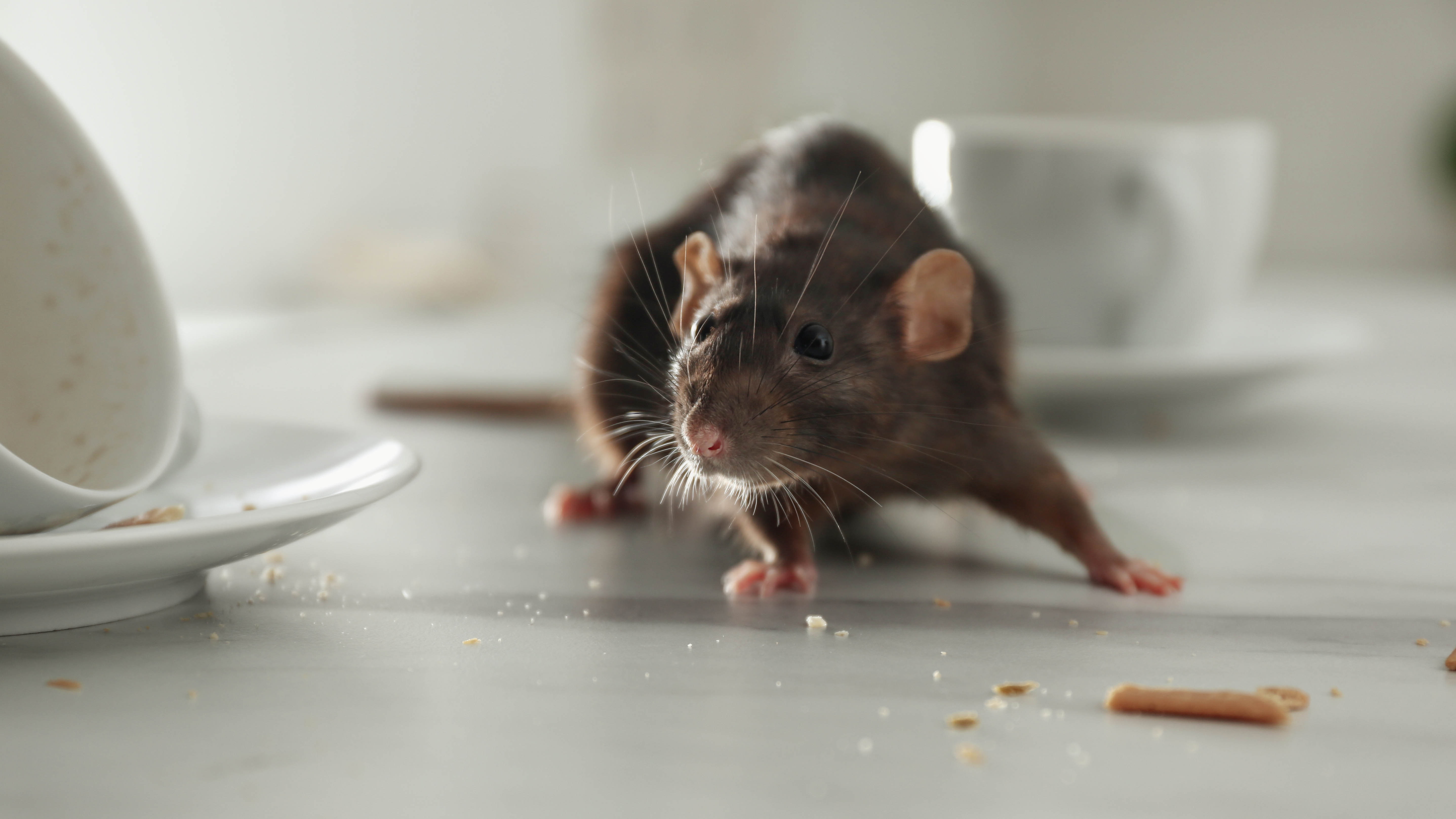
Knowing how to get rid of rats can help you deal with this pest quickly and effectively. If you suspect a rat has taken up residence in your home, it can leave you feeling uncomfortable and unsafe. Rodents carry diseases which can be fatal if transmitted to either humans or animals, and as rats are known to be more aggressive versus mice, care must be taken to avoid being bitten.
That’s why if you’ve spotted signs of a rat around your home, you need to take action as soon as possible. It's plainly unhygienic and dangerous for yourself as well as any children or pets.
If you’re looking for guidance on what to do, here we'll break down how to get rid of rats step-by-step, including preventative measures to stop this pest from returning. Should you be unsure of whether you’re dealing with a rat in the first place, we will also cover signs to indicate this pest.
Find out what are the 7 things that attract rats and mice to your home.
How to get rid of rats
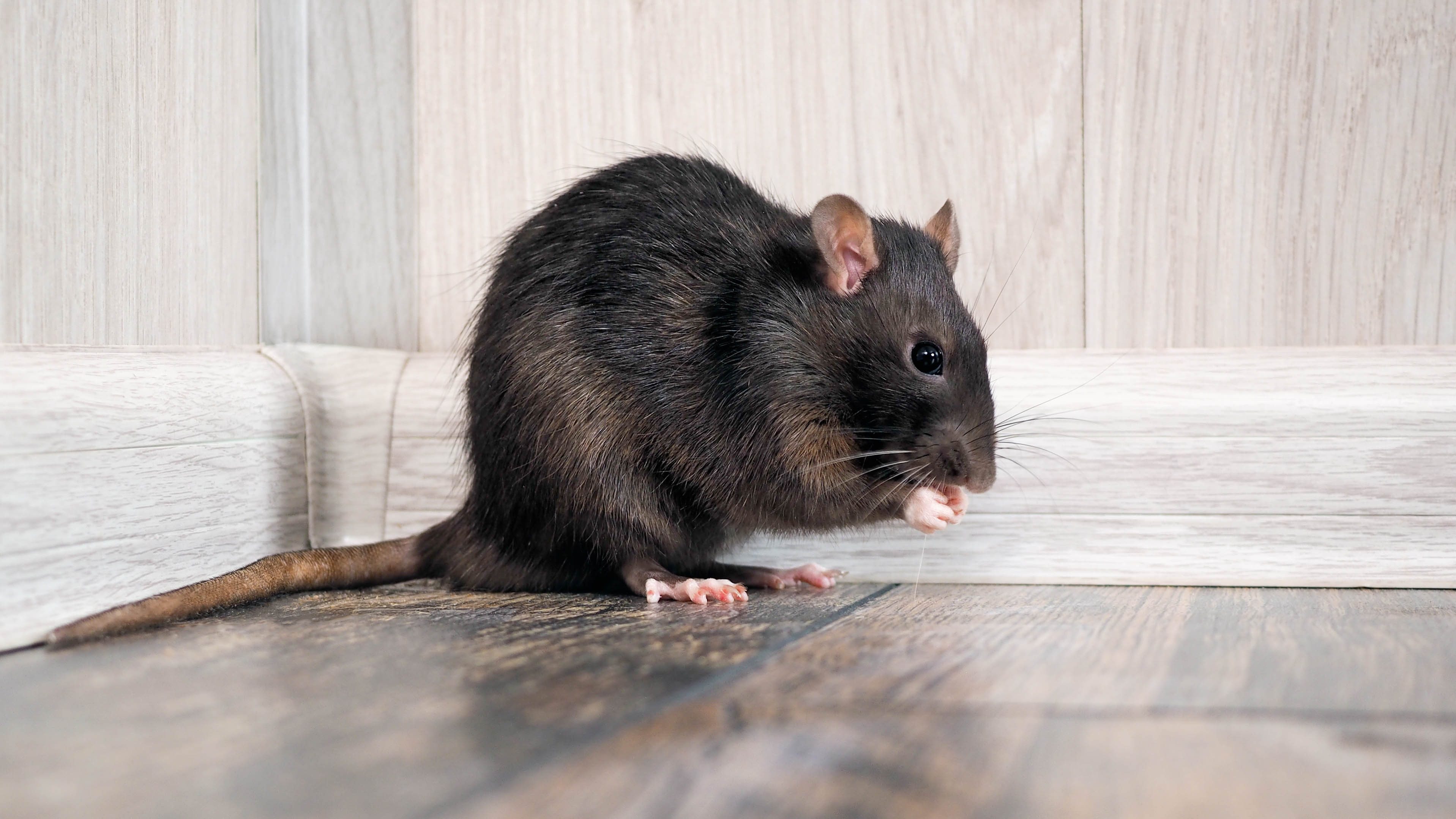
1. Confirm you are dealing with a rat
First, it’s important that you know for sure what kind of pest you’re dealing with. Rats can often be confused with mice, particularly if we presume the worst and don’t actually see the pest. While preventative measures are similar, different traps and options will be more relevant for mice, so make sure you know what rodent you’re facing with before you jump to conclusions.
You can find a list of rat infestation symptoms at the end of this feature. Mice will leave similar marks, which is why they’re easy to confuse, but these pests are naturally smaller — about half the size, so any damage or traces won't be as severe. The difference in droppings is a good indicator; mouse droppings are usually less than a ¼ inch in length, while rat droppings are ½-¾ inches in length.
Sign up to get the BEST of Tom's Guide direct to your inbox.
Get instant access to breaking news, the hottest reviews, great deals and helpful tips.
If you suspect you have a mouse rather than a rat, here’s how to get rid of mice.

2. Take precautions
Now that you know you’ve got at least one rat in the house, you need to take proper precautions immediately. Rats can be dangerously aggressive, biting when they feel threatened, and they are capable of transmitting fatal diseases as well as triggering allergies.
It’s essential that you keep both children and pets away from these rodents. If you know where the rats frequent, keep children and pets out of these rooms. Even if they don’t come across a rat, traps too can cause their own hazards, especially if baited with poison, so make sure these spaces are secured. Take precautions yourself whenever handling traps or poisonous bait as well. You can always call in a professional to deal with the traps and baiting if you feel uncomfortable or unsure.
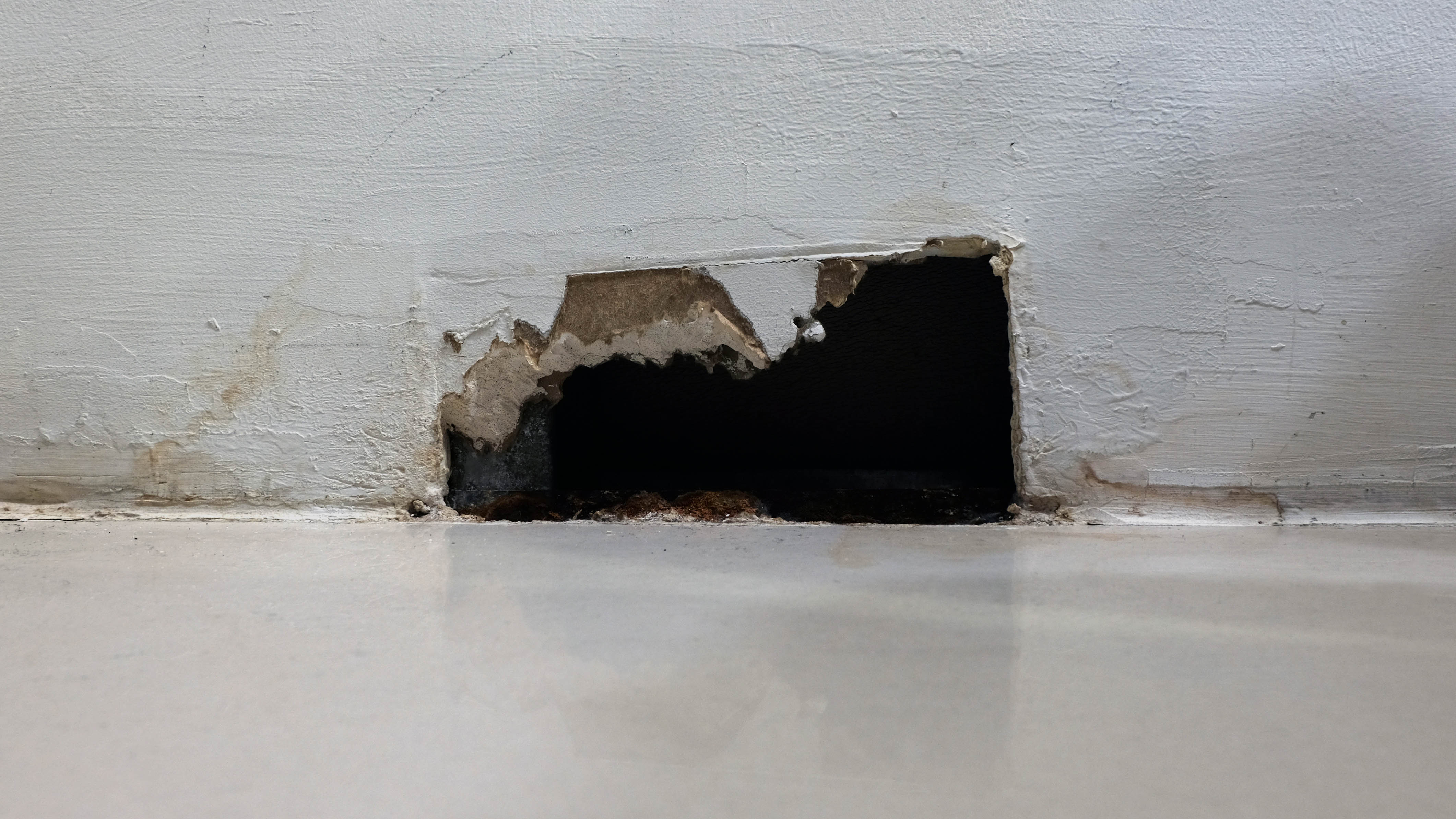
3. Seal any cracks or gaps
A young rat can fit through gaps as small as a dime in size, and full size rats only require a gap as big as a quarter. Inspect along the baseboards, under cabinets and around doors for any potential entryways. Even holes in your brickwork can provide an effective tunnel. If you spot any droppings near a gap, that’s a likely entryway.
These gaps will need to be filled in to prevent the rat from returning on its usual route. Caulk can seal this in, or you can use metal sheets for larger spaces, such as this Wire Mesh ($5.99, Amazon).
Be as thorough as you can in your inspection — if you miss one gap, the rat will still have a way in. A professional can help inspect your home for entryways if necessary too.
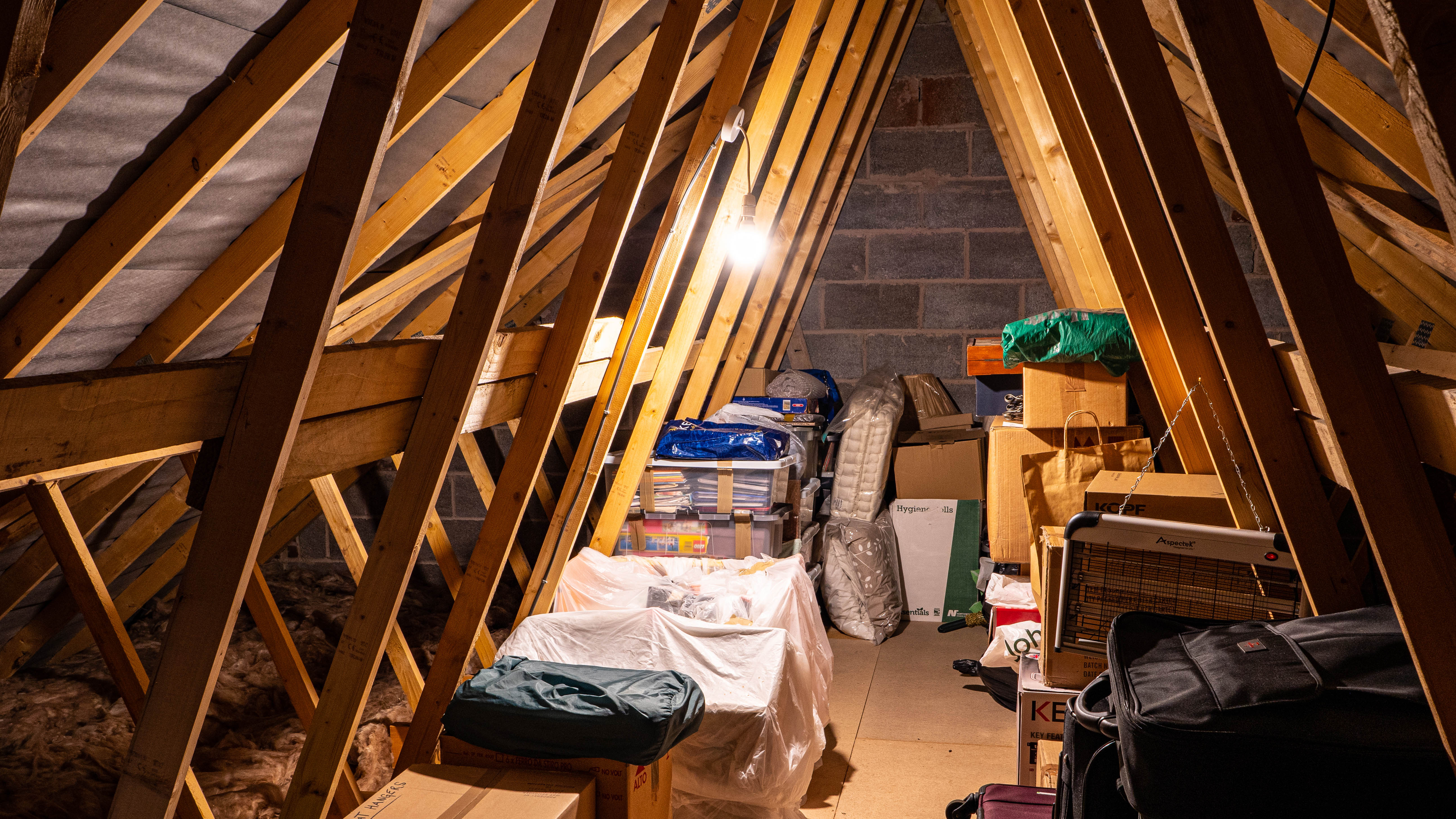
4. Tidy up
Rats love a messy environment. This provides plenty of cover to hide as they travel, making them feel less exposed and vulnerable. So, if your home looks a mess, with clutter left, right and center, you’re not helping your cause. Add to that, if you leave any soft, insulative materials lying around, such as cardboard or newspaper, you’re providing nesting grounds too. For this reason, an undisturbed, but cluttered attic environment can be particularly attractive to rats.
Declutter your home, leaving the floor space clear. Run one of the best vacuum cleaners over the surfaces to get rid of any crumbs and debris as well. This will make the space less appealing for rats.
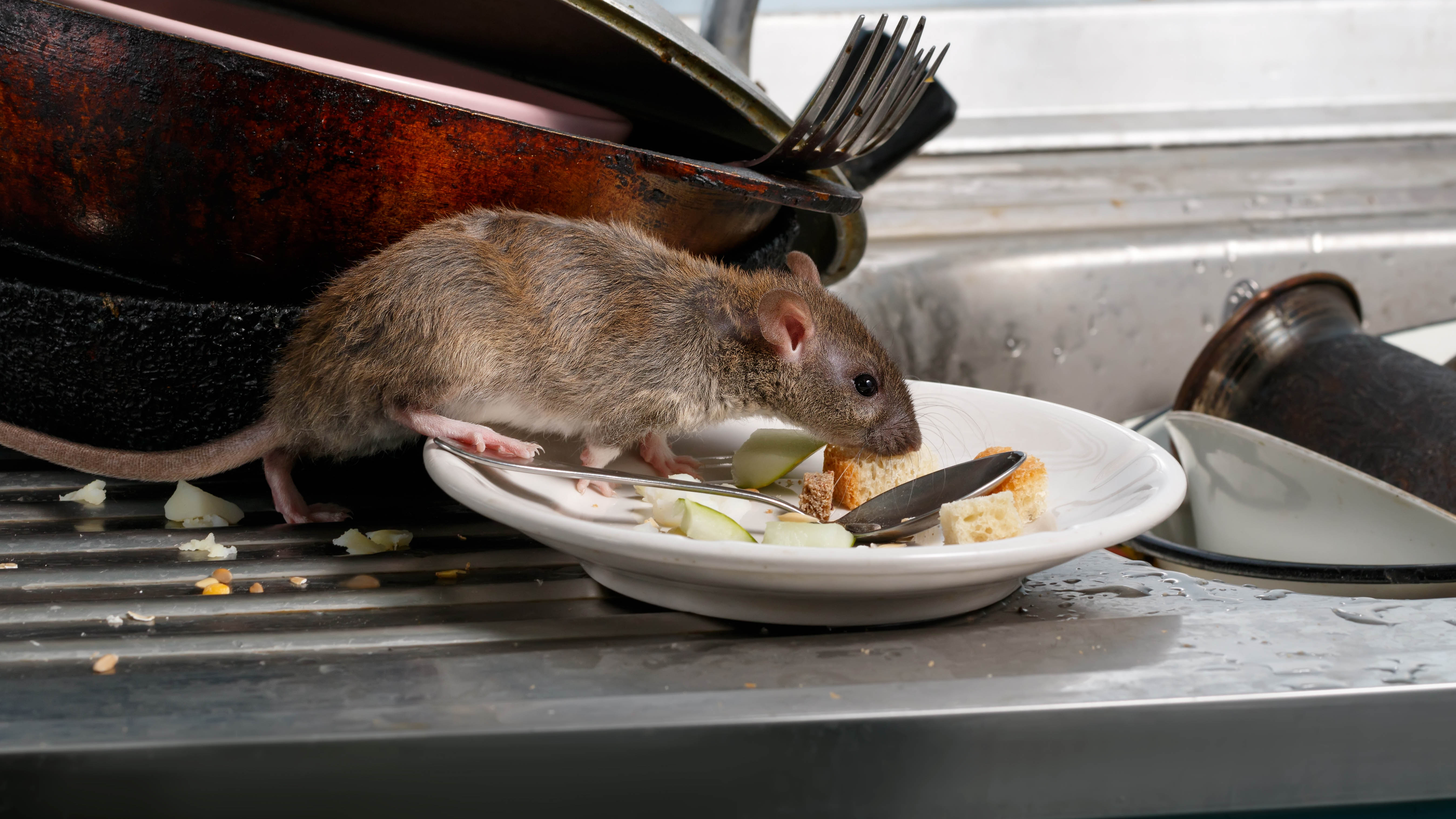
5. Remove food sources
Rats are attracted to warmth, shelter and, of course, food. If you often leave food lying around your home, rats will take advantage. This includes any crumbs which may be left on the floors and surfaces in your kitchen. Make sure any residual food is properly sealed in airtight containers or disposed of. Don’t stop there either — your everyday trash can might not be enough. Make sure any waste is securely locked away. Seal down your trash can using a tie or latch, such as the Blazer Brand Strong Strap Stretch Latch ($31.85, Amazon).
Pay attention to any exposed alternative foods which may be attracting rats as well. For instance, pet food, bird seed and fruit which has fallen from trees can all lure rats into your yard and home. Don’t leave any of these foods out unattended. A rat-proof bird feeder may be best for feeding birds in the future, such as this Roamwild PestOff Squirrel Proof Wild Bird Feeder ($49.99, Amazon).
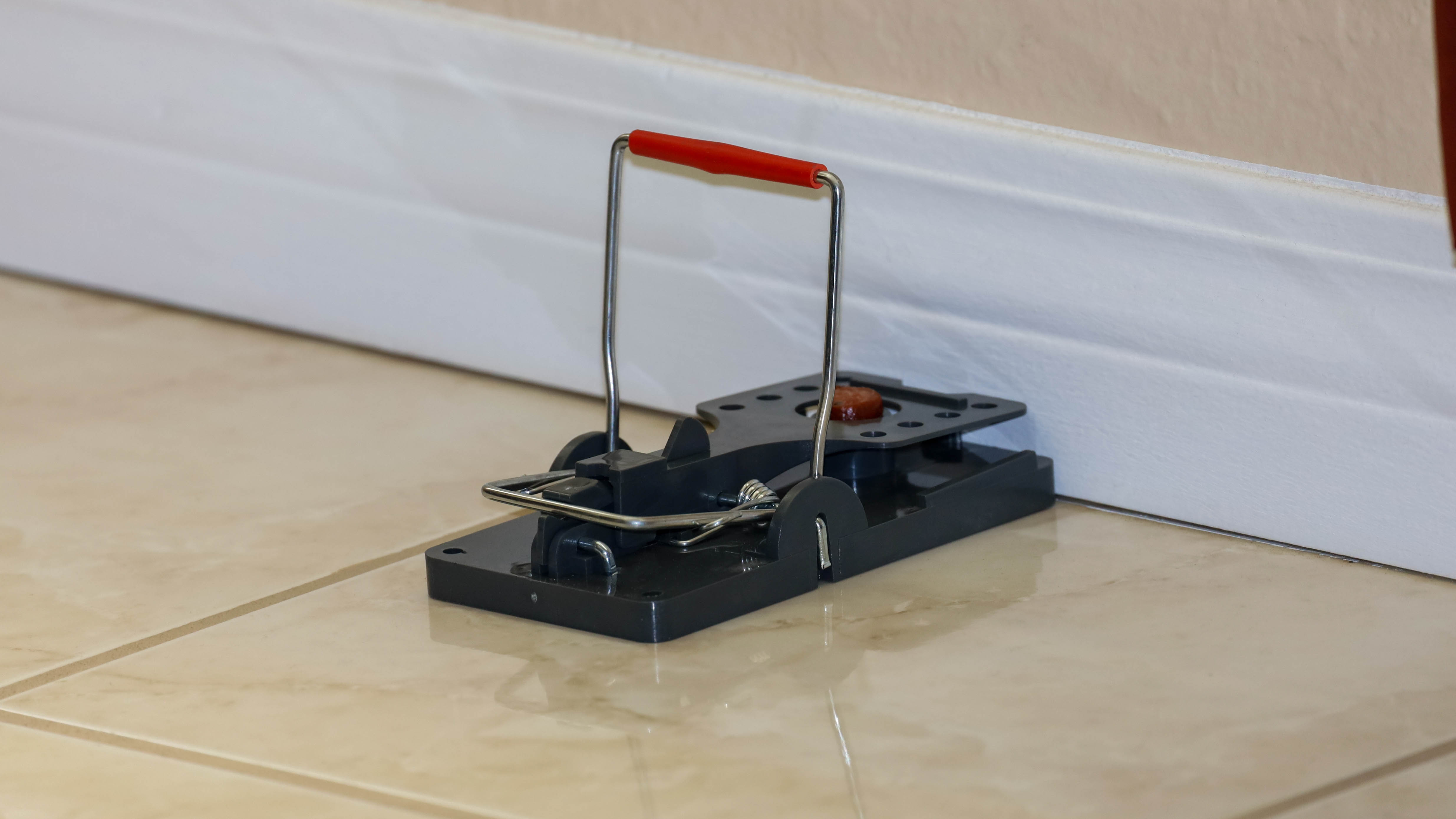
6. Set traps
It's important that you familiarize yourself with local laws in terms of which traps and baits you can use before you take action. Pest control companies can inform you of this if you're unsure.
You can buy a conventional rat trap from your local home department store. Popular options include snap traps, live traps and bait stations. Snap traps are the most cost effective — these are powerful enough to kill rats on contact, being a larger version of a typical snap shut mouse trap. However, great care needs to be taken with these as they can cause severe damage if accidentally triggered.
As the name suggests, live traps will capture the rat while still alive. Once a rat enters the trap, it's unable to exit. The trap will need to be checked regularly because of this, just like every other type of trap — at least once a day. You are then free to release the rat a safe distance from your home to prevent it from returning, but it must not be relocated where it may cause harm to others. Alternatively, you can humanely kill the rat.
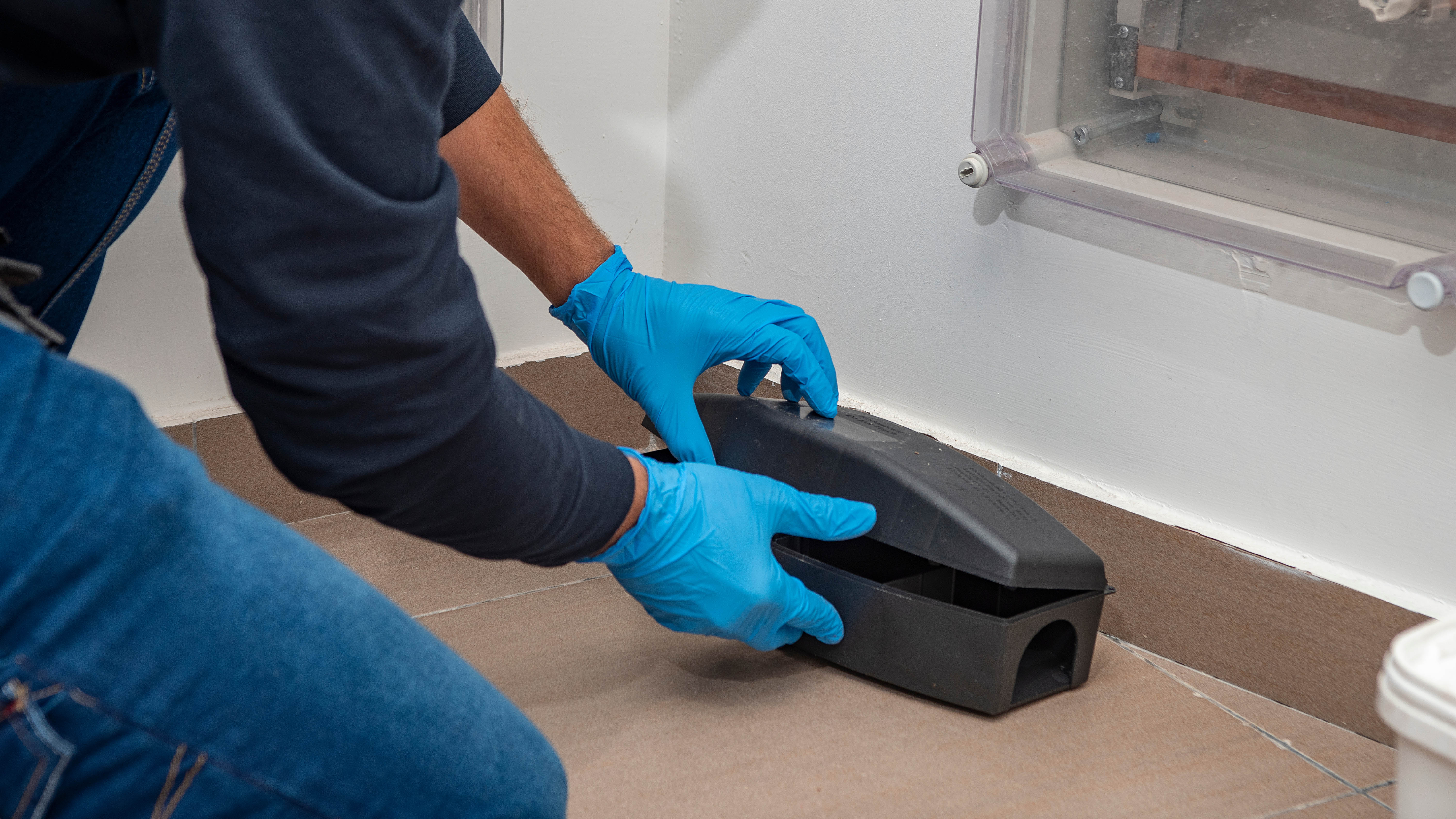
Bait stations contain an approved poisonous rodenticide which, once ingested, will eventually kill the rat. Certain rodenticides are not approved for consumer use as they can be a danger if exposed to children or pets, so you need to make sure you follow federal laws on this substance in terms of what can be used as well as handling and safety. Stick to what’s supplied with the station, and continue with it should you need to refill — although keep in mind that not all bait stations are refillable.
The problem with these traps is the rat can die somewhere awkward to reach in your home, which isn’t ideal. Handling rodenticides can be dangerous too, even if every care is taken. We’d recommend bringing a professional in if you’re determined to take this route.
Glue traps are another widely available option, however we do not recommend these as they’re an inhumane method of killing rats.
Traps will need to be laid in high traffic areas for the rat and checked daily. Don’t be discouraged if your traps fail at first; rats naturally aren’t as curious as mice, so trapping them takes patience and persistence. Should you successfully trap and kill a rat, you will need to dispose of it immediately as it can quickly smell and attract further pests. Make sure you wear protective gear as you do this and double bag the rat before throwing it in the trash. Bear in mind, some municipalities do not allow for dead animals to be disposed of in the trash, so check this first.

7. Use preventative measures
There are some homemade remedies you can try to prevent rats as well. For instance, peppermint oil, lavender oil and citronella all have a deterring effect on rats. So by applying these scents around your home, you’re actively repelling rodents. Simply dilute the oil with water and spray in areas where the rats frequent. Alternatively, you can strategically place these 7 plants that keep mice and rats from invading your home.

8. Call a professional
If all else fails, or you’re uncomfortable with trying to trap a rat yourself, you can always call in a professional. Their expertise can help with the best placement of the traps as well as finding potential entryways. Plus, they can help dispose of the rat once it’s successfully caught as well. A professional ensures you adhere to federal laws and legislation when it comes to rodenticides and traps on top of this.
How to tell if you have rats in the house
- Droppings — Small, black droppings (½ to ¾ inches in length) are a key indicator that you’ve got a rat in the house.
- Sounds — Being nocturnal, rats can make a lot of noise at night, which may become more apparent while you’re trying to sleep. Scratching and scuffling is often heard around the walls and within.
- Residual damage — Rats will often gnaw through electric cables, which can be a potential fire hazard. Keep an eye on hidden cables which are tucked up against walls for signs of damage.
- Smells — Rats smell quite obvious, emitting a musky, ammonia-heavy scent.
- Marks on walls — These rodents are pretty greasy and as they prefer to travel along the walls, you may notice a marks on the baseboards.
- You see one — Of course, if you see a rat you know you’ve got a problem. The tail will be hairless and it will measure up to 8 inches in length (although this depends on the type of rat).
More from Tom's Guide

Katie Mortram used to be a Homes Editor for Tom's Guide, where she oversaw everything from kitchen appliances to gardening tools, as well as smart home tech. Specializing in providing expert advice for cleaning and home manintenance, she now works as Household Advice Editor for Good Housekeeping.
